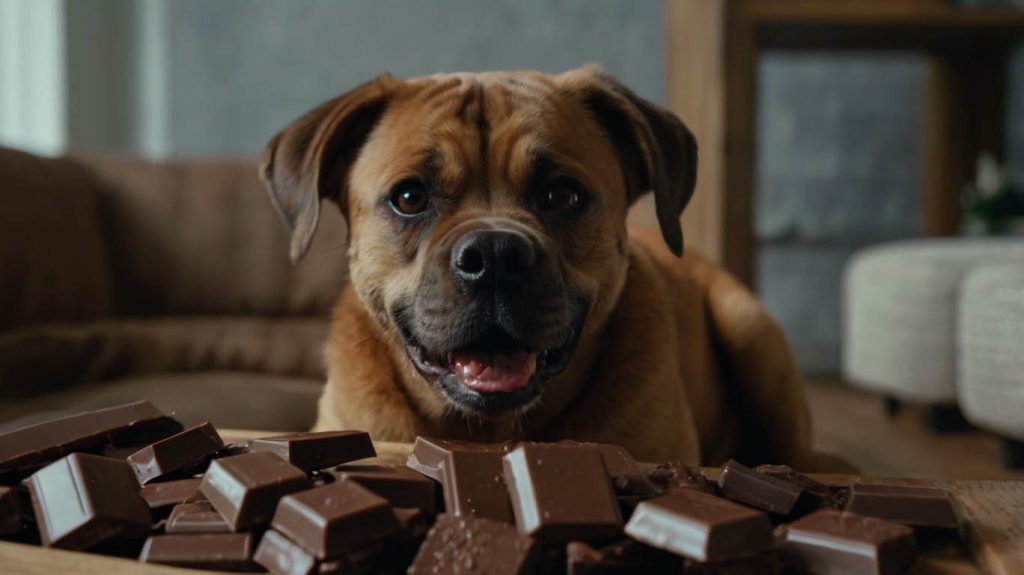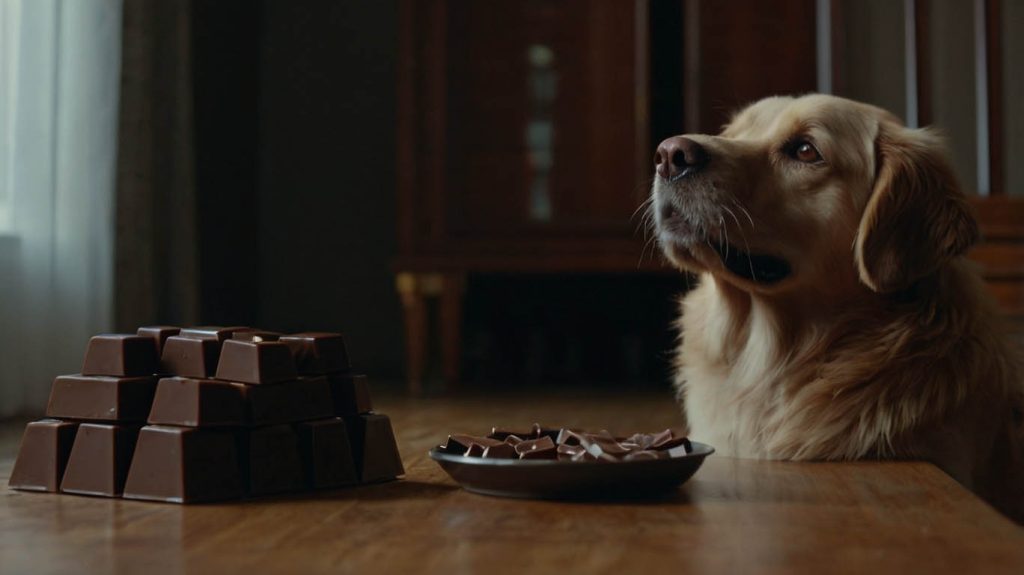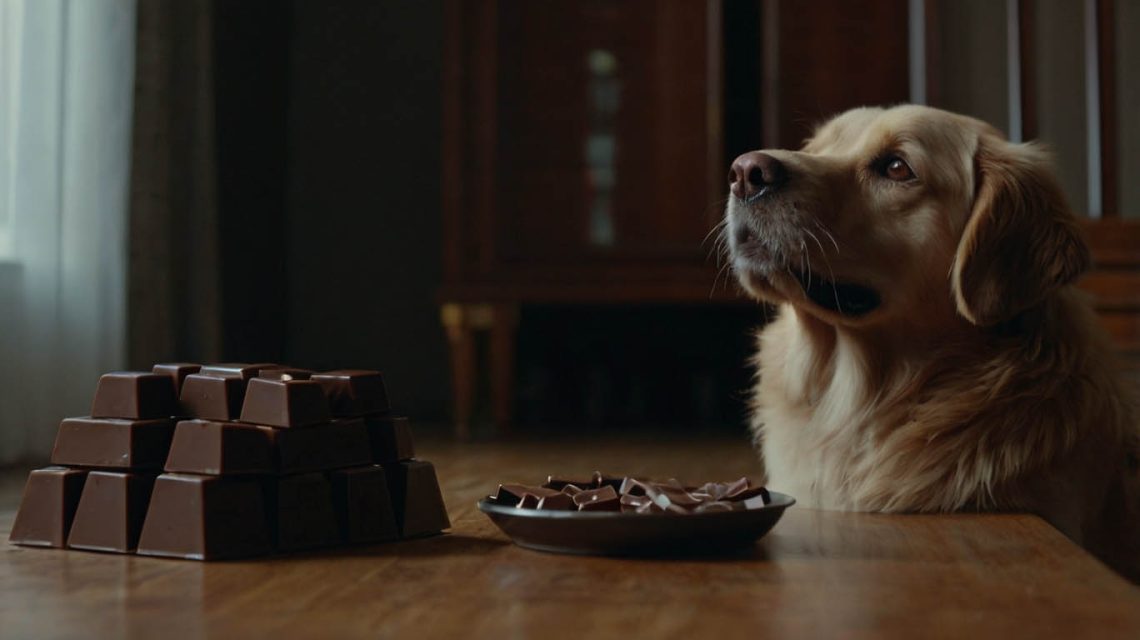What to Do If Your Dog Eats Chocolate: An Emergency Guide for Pet Owners
It’s a moment that strikes fear into the heart of any dog owner. You walk into the kitchen to find a scene of delightful destruction: a ripped candy wrapper on the floor, brown smudges on your dog’s muzzle, and a look of pure, unadulterated guilt in their eyes. Your heart plummets as the realization dawns. They got into the chocolate. Immediately, a wave of panic sets in, and your mind starts racing with worst-case scenarios. Consequently, you grab your phone and type in the single most important question of the moment: what to do if your dog eats chocolate?
If you are in this situation right now, the first and most important thing to do is take a deep breath. Panicking won’t help your dog. Acting quickly and calmly will. Therefore, this guide is designed to be your emergency action plan. We will walk you through the immediate steps you need to take, help you understand why chocolate is toxic, and explain what information your veterinarian will need to save your dog’s life.
The Immediate First Step: What to Do If Your Dog Eats Chocolate RIGHT NOW
Time is of the essence. Do not “wait and see.” Follow these steps immediately.
- Secure Your Dog and Any Remaining Chocolate: First, get your dog into a safe, confined space and remove any leftover chocolate and wrappers to prevent them from eating more.
- Gather the Evidence: Collect the wrapper or packaging. You need to know exactly what kind of chocolate your dog ate and, if possible, how much is missing.
- DO NOT Try to Induce Vomiting at Home: Do not give your dog hydrogen peroxide, salt, or anything else to make them vomit unless you have been explicitly instructed to do so by a veterinarian. Inducing vomiting improperly can be dangerous and can cause more harm than good.
- CALL YOUR VETERINARIAN or an ANIMAL POISON CONTROL HOTLINE IMMEDIATELY. This is a non-negotiable, critical step. Do not email them or wait for a call back. You need to speak to a professional right away.
Emergency Hotlines:
- ASPCA Animal Poison Control Center: (888) 426-4435 (A consultation fee may apply)
- Pet Poison Helpline: (855) 764-7661 (A consultation fee may apply)

Why Chocolate is Toxic: Understanding the Danger
To understand the urgency, you need to know why chocolate is poisonous to dogs. The danger lies in two chemical compounds found in the cacao bean:
- Theobromine: This is the primary toxin. Dogs metabolize theobromine much more slowly than humans do, allowing it to build up to toxic levels in their system.
- Caffeine: Present in smaller amounts, caffeine also acts as a stimulant and contributes to the toxic effects.
These substances are both stimulants that primarily affect a dog’s central nervous system, cardiovascular system, and respiratory system. This is the core of the problem when considering what to do if your dog eats chocolate.
Crucial Information Your Vet Will Need
When you call your vet or the poison control hotline, they will ask you a series of specific questions. Having the answers ready will allow them to assess the situation quickly and accurately. This is the most important part of knowing what to do if your dog eats chocolate.
1. Your Dog’s Weight
The toxicity is dose-dependent, meaning a small amount of chocolate is much more dangerous for a 10-pound Chihuahua than for an 80-pound Golden Retriever.
2. The Type of Chocolate Eaten
This is the single most important factor. Not all chocolate is created equal. The concentration of theobromine varies dramatically by type.
- Most Toxic: Baker’s chocolate and dark chocolate (especially those with a high cacao percentage) contain the highest levels of theobromine.
- Moderately Toxic: Semi-sweet and milk chocolate have lower, but still potentially dangerous, levels.
- Least Toxic: White chocolate has a negligible amount of theobromine and is less of a concern for toxicity (though the fat and sugar can still cause an upset stomach).
3. The Amount of Chocolate Ingested
Try to estimate how much your dog ate. This is where the wrapper is invaluable. If they ate half of a 4-ounce bar of dark chocolate, tell the vet exactly that.
4. The Time of Ingestion
Try to pinpoint when your dog ate the chocolate. This helps the vet determine how much of the toxin has likely been absorbed and what treatment options are still viable (like inducing vomiting).

Symptoms of Chocolate Poisoning in Dogs
The signs of toxicity can take 6-12 hours to appear and can last for up to 72 hours. Your quick action can prevent these symptoms from ever developing.
- Mild Signs: Vomiting, diarrhea, increased thirst, and restlessness.
- Moderate Signs: Hyperactivity, increased urination, and a rapid heart rate.
- Severe Signs: Muscle tremors, seizures, heart arrhythmias, and in the worst cases, heart failure.
Knowing these signs is a key part of understanding what to do if your dog eats chocolate.
Veterinary Treatment for Chocolate Poisoning
If your vet determines the dose was toxic, they will likely instruct you to bring your dog in immediately. Treatment may include:
- Inducing Vomiting: If the chocolate was eaten recently, your vet can safely induce vomiting to remove it from their stomach.
- Administering Activated Charcoal: This substance binds to any remaining toxins in the digestive tract, preventing them from being absorbed into the bloodstream.
- IV Fluids: To help flush the toxins out of their system and prevent dehydration.
- Supportive Care: This may include medications to control seizures, regulate their heart rate, and manage other symptoms.
Prevention: The Best Medicine
The only thing better than knowing what to do if your dog eats chocolate is preventing it from ever happening.
- Store All Chocolate Securely: Treat chocolate like any other poison. Keep it in high cupboards or sealed containers, well out of your dog’s reach.
- Educate Your Family and Guests: Make sure everyone in your home, including children and visitors, understands that chocolate is dangerous for your dog and should never be offered as a treat.
- Be Extra Vigilant During Holidays: Times like Easter, Halloween, and Christmas are high-risk due to the abundance of chocolate candy.
Your Calm, Quick Action Can Save Their Life
That moment of panic when you discover your dog has eaten chocolate is terrifying. But by staying calm, gathering the necessary information, and contacting a veterinary professional immediately, you can take control of the situation. You are your dog’s first responder, and your quick, decisive action is their best chance for a positive outcome.
Have you ever had a chocolate scare with your dog? Share your story (and what you learned) in the comments below to help other owners.


